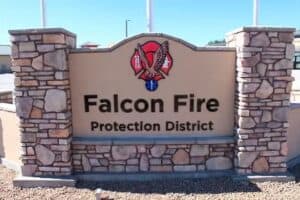Spring cleaning is a great time to improve household safety. The Falcon Fire Protection District offers the following suggestions.Clean out clothes dryer ventsThe U.S. Fire Administration estimates 2,900 clothes dryer fires in residential buildings are reported to U.S. fire departments every year. These fires result in property damage and loss totaling $35 million annually and cause injuries and even deaths. The leading cause of clothes dryer fires is a failure to clean them.Lint is a highly combustible material that can accumulate both in the dryer and its vent. Accumulated lint leads to reduced airflow, meaning the vent will not properly exhaust to the outside. Bird or small animal nests can also block vents. Compromised vents can create overheating and ignition of lint.Avoiding fires
- Clean the lint filter before and after each cycle. Also clean the lint filter with a nylon brush at least every six months, or more frequently if it becomes clogged.
- Regularly clean the back of the dryer where lint can build up.
- Inspect the venting system behind the dryer to ensure it is not damaged, crushed or restricted.
- Dryer vents should exhaust directly to the outside, not into attics or other areas of the building.
- Ensure the outdoor vent covering opens properly when the dryer is operating.
- Have qualified service personnel periodically clean and service the dryerís interior and venting system, especially if it is taking longer than normal for clothes to dry.
- Replace coiled-wire foil or plastic venting with rigid, non-ribbed metal duct.
- Check periodically to make sure nests of small animals or birds are not blocking the outside vent.
- Keep the area around the clothes dryer free of items that can burn.
- Follow manufacturerís instructions for use and donít overload the dryer.
- Keep 9-volt batteries in the original packaging until they are used.
- Do not store 9-volt batteries loose with other batteries, paper clips, coins or other metal objects.
- Store batteries standing up.
- Do not dispose of 9-volt batteries in the trash. Cover exposed terminals with duct, masking, or electrical tape and take batteries to a household hazardous waste facility.
- Use an old duffle bag, backpack or rolling suitcase for an evacuation kit or a car emergency kit. Pack evacuation kits with serviceable clothing and shoes that were going to be donated anyway.
- Include a towel and a small, lightweight blanket or sleeping bag.




